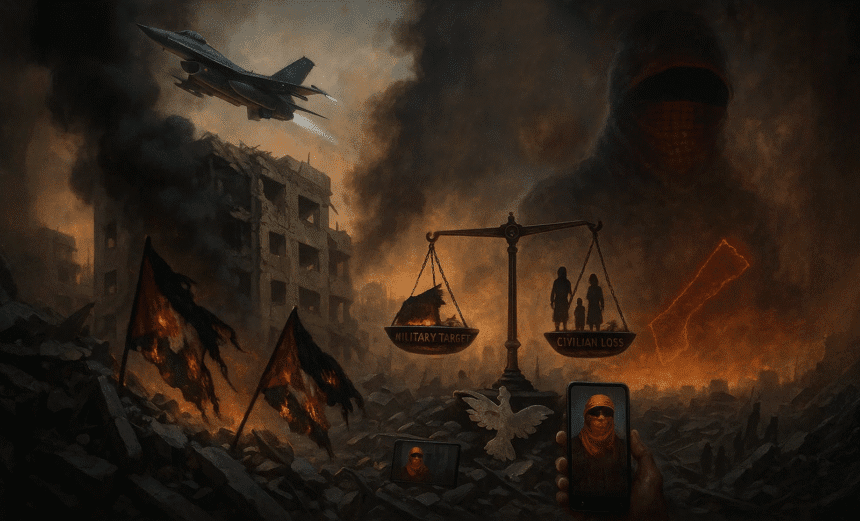Israeli authorities have asserted that Abu Obeida, the longtime spokesperson for Hamas’s military wing, the al‑Qassam Brigades, was killed in an airstrike in the Rimal neighborhood of Gaza City on August 30, 2025. Israeli Defense Minister Israel Katz publicly declared that the operation had eliminated the figure known as Hudayfa al‑Kahlout, describing the strike as a “flawless execution” enabled by intelligence from the Shin Bet and military intelligence agencies. Separately, Israeli officials emphasized precision targeting, although local reports suggest at least 11 civilians, including children, were killed and around 20 injured in the residential building that was hit.
Despite Israel’s assertion, Hamas has not confirmed Abu Obeida’s death. In previous instances of high‑profile targeted killings, the group has dismissed reports of casualties as attempts at psychological pressure.
Tactical and Psychological Consequences
Eliminating a symbolic voice such as Abu Obeida, known for his role in Hamas’s propaganda and hostage video dissemination, may carry immediate tactical advantage. Israel appears intent on weakening Hamas’s strategic communication and public morale by removing a principal figure capable of rallying support and crafting narratives, according to The New York Post. The strike coincided with Israeli preparatory steps for a broader offensive in Gaza City, where Abu Obeida had issued warnings linking the safety of hostages to the escalation of combat.
However, such decapitation strategies may have the opposite of their intended effect. Hamas has repeatedly demonstrated resilience amid the loss of leaders, with no viable spokesperson swiftly emerging in Abu Obeida’s stead. This pattern suggests that while the strike may disrupt messaging temporarily, the organization’s structural adaptability remains intact.
Civilian Cost and Strategic Calculus in Gaza
The reported killing of Abu Obeida comes amid a significant escalation in Israel’s military campaign across Gaza City, a region now designated by the Israeli military as an active combat zone. This latest airstrike, which Israel claims targeted the Hamas spokesperson, also struck a residential building, reportedly killing at least 11 civilians, including children, and injuring more than 20 others. Local health authorities put the broader weekend death toll at over 150, underscoring the severe human cost of continued hostilities.
As the Israeli security cabinet weighs the expansion of ground operations into the heart of Gaza’s urban landscape, humanitarian agencies report a deepening catastrophe. Over 80 percent of Gaza’s population is now displaced, and the collapse of essential infrastructure, water systems, electricity, hospitals, has left civilians without access to basic survival needs. The United Nations has formally declared that parts of Gaza are experiencing famine, a rare and grave classification under international criteria. Aid organizations are unable to reach large sections of the population due to relentless bombardment, and there are currently no active ceasefires or humanitarian pauses in place, leaving civilians trapped in active combat zones without safe corridors or aid delivery.
From a strategic perspective, the elimination of Abu Obeida, if confirmed, may serve Israel’s short-term objectives of disrupting Hamas’s media apparatus and deterring public messaging. Abu Obeida had long been the face of Hamas’s military wing, frequently appearing in videos that issued warnings, claimed responsibility for attacks, or articulated political demands. His absence, even temporarily, may hinder Hamas’s ability to communicate effectively in real time. However, such decapitation strategies have historically yielded mixed results. Hamas, like other non-state militant groups, is structured to survive leadership losses, and the removal of one figure rarely leads to long-term organizational collapse.
Moreover, this approach carries heavy political and humanitarian costs. Civilian casualties associated with targeted killings erode international support and fuel accusations of disproportionate force. Human rights organizations have repeatedly raised concerns that Israel’s tactics, particularly in densely populated areas, risk breaching international humanitarian law, specifically the principles of distinction and proportionality. The cumulative toll of thousands of civilian deaths and widespread destruction has already sparked calls for international investigations and drawn scrutiny from bodies like the International Criminal Court.
On the diplomatic front, such operations could also stall indirect negotiations around ceasefires or hostage exchanges. Hamas may interpret the strike as an attempt to disrupt mediation efforts, particularly given the timing of ongoing talks involving regional intermediaries. As trust erodes, opportunities for de-escalation grow increasingly narrow.
A Final Note
The claimed assassination of Abu Obeida marks a symbolic moment in Israel’s ongoing campaign in Gaza, but its broader consequences are far from contained. While the tactical objective of silencing a key propagandist may have been achieved, the civilian cost and geopolitical fallout raise urgent questions about the sustainability and legality of such strategies. As humanitarian conditions worsen and diplomatic avenues shrink, Palestinians in Gaza face not only the immediate devastation of war but the deepening isolation of a conflict with no clear path to resolution.



















